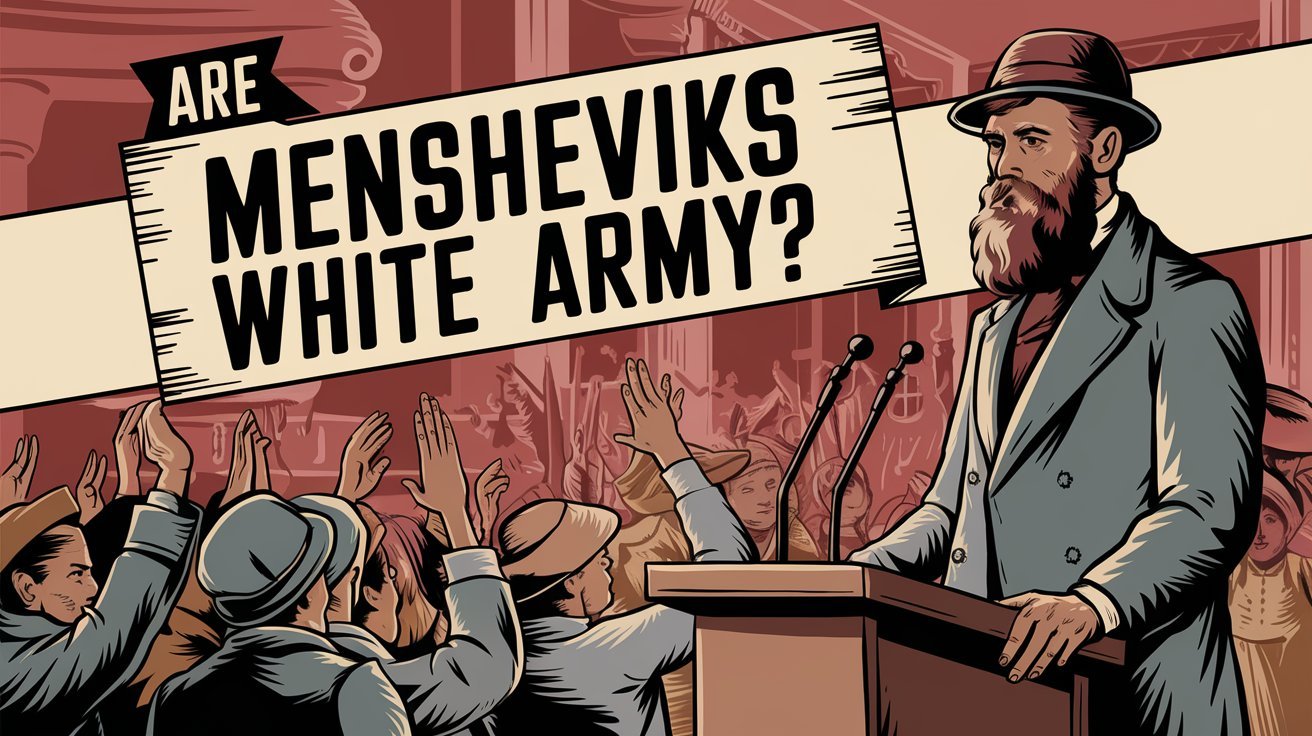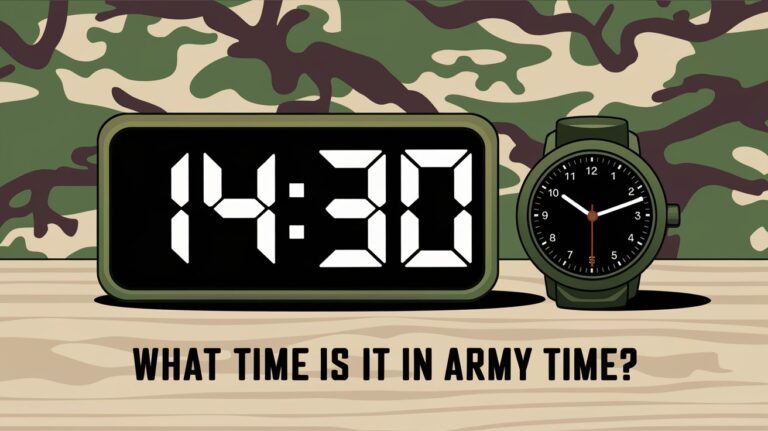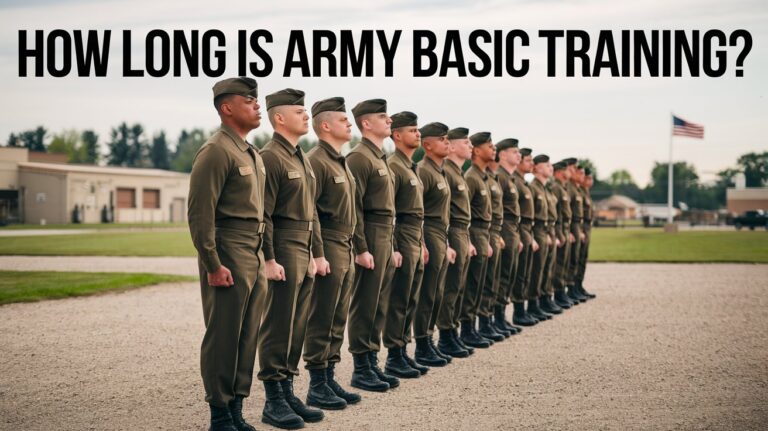Are Mensheviks White Army: Facts Uncovered

The Russian Civil War was a complex fight for control of the nation. The Bolsheviks won and set up the Soviet regime. The White Army, fighting against the Bolsheviks, is well-known. But the Mensheviks, a faction of the Russian Social-Democratic Workers’ Party, are often forgotten.
This article will explore the connection between the Mensheviks and the White Army. It will give a detailed look at their role in the Russian Civil War.
Origins of the Mensheviks in Russian Politics
The Mensheviks were a part of the Russian Social-Democratic Workers’ Party. They split from the party in 1903. Led by L. Martov, they wanted a party like those in Western Europe, not Lenin’s vision of a professional revolutionary party.
This disagreement marked a key moment in Menshevik history. It also shaped their relationship with the Bolsheviks.
Formation at the 1903 Party Congress
At the 2nd Congress of the RSDLP in 1903, Lenin’s group won by a small margin. They got 28 votes, while Martov’s group had 23. But, both sides agreed to reject the Bundist proposal, which lost 41 to 5.
Later, at the 4th Congress of the RSDLP in 1906, the Mensheviks took the lead. This marked a reunion between the Bolsheviks and Mensheviks.
Key Ideological Differences with Bolsheviks
The Mensheviks thought the proletariat shouldn’t lead a bourgeois revolution. They were okay with working with the bourgeois left to create a liberal, capitalist society first. This was different from the Bolsheviks’ goal of a party-led revolution to create a socialist state.
Leadership Under Martov
L. Martov led the Mensheviks. He was a key figure in the Russian Social-Democratic Workers’ Party. Martov’s leadership was important in shaping the Mensheviks’ views and their approach to revolution in Russia.
| Characteristic | Mensheviks | Bolsheviks |
|---|---|---|
| Party Structure | Mass party with broad membership | Party of professional revolutionaries |
| Approach to Revolution | Willing to work with bourgeois left for a liberal, capitalist regime | Seize power and establish a socialist state |
| Relationship with Proletariat | Proletariat should not dominate a bourgeois revolution | Proletariat should lead the revolution |
White Movement: Formation and Military Structure
The White movement, also known as the Whites, was a key player in the Russian Civil War. It opposed the Bolsheviks. The Whites were mainly made up of conservative officers from the old Russian Empire. They formed a loose system of governments, administrations, and military groups called the White Army.
The White Army’s structure changed a lot during the civil war. In May 1919, it had about 1,023,000 soldiers. This number grew, with combat units increasing from 4,000 in December 1917 to 683,000 by June 1919.
But, the White Army’s luck changed in the war’s later stages. By December 1919, they had around 300,000 soldiers. By summer 1920, this number dropped to about 100,000. The decline kept going, with only 8,000 soldiers left by September 1922 and just 1,000 by 1923. This showed the White Army’s final defeat.
The White movement’s military was not united or well-coordinated. Different leaders, like General Kornilov, General Denikin, and Admiral Kolchak, led different groups. The Bolsheviks, with their disciplined Red Army and strong propaganda, eventually defeated the Whites.
Are Mensheviks White Army: Historical Analysis
The Mensheviks were a socialist group in the Russian Social Democratic Labor Party. They were not part of the White Army during the Russian Civil War. The Mensheviks and the White Army had big differences in their beliefs and goals. This made it hard for them to work together.
Relationship Between Mensheviks and White Forces
The Mensheviks wanted a slow, democratic move to socialism. On the other hand, the White Army wanted to bring back the old, autocratic Russia. The Mensheviks didn’t want to team up with the White Army’s leaders, like General Aleksandr Kolchak.
Political Alliances During Civil War
- The Mensheviks tried to be a legal opposition to the Bolsheviks during the Civil War. But, they were pushed out and couldn’t stay in Russia.
- Even though the White Army got support from some groups, the Mensheviks didn’t join the anti-bolshevik coalition.
- The Mensheviks were left out during the russian civil war. The fight became more divided between the Bolsheviks and the right-wing White forces.
Mensheviks and the White Army were different groups with different aims. The Mensheviks opposed the Bolsheviks but didn’t join the White Army’s conservative movement during the Russian Civil War.
Role of Mensheviks in the February Revolution
The Mensheviks were a key socialist party in Russia during the February Revolution of 1917. After the Tsar was overthrown, they took on leadership roles in the new soviets and governments.
Mensheviks and Bolsheviks had big differences. The Bolsheviks wanted a violent, worker-led revolution. But the Mensheviks believed in a more gradual, democratic change. This disagreement led to a split in 1903, after a vote in the party congress.
Even with their differences, the Mensheviks worked with the Bolsheviks before the February Revolution. But their unity didn’t last. By September 1917, they were too divided. This allowed the Bolsheviks to take control of the Soviets and try to take down the provisional government.
| Mensheviks in the February Revolution | Bolsheviks in the February Revolution |
|---|---|
| Assumed leadership positions in soviets and provisional governments | Gained majority in Soviets and attempted to overthrow provisional government |
| Favored a gradual, democratic approach to social change | Advocated for a violent, worker-led revolution |
| Collaborated with Bolsheviks initially, but later became hopelessly divided | Capitalized on the Mensheviks’ division to gain power |
The Mensheviks’ part in the February Revolution was complex. They worked together with the Bolsheviks at first but then split. This split helped the Bolsheviks take power in the October Revolution later that year.
White Army Leadership and Command Structure
The White Army was a group fighting against the Bolsheviks in the Russian Civil War. It was led by famous military leaders from the old Russian Empire. Alexander Kolchak, Anton Denikin, and Pyotr Wrangel were among the most well-known.
Notable Military Commanders
- Alexander Kolchak – He was the Supreme Ruler of Russia and led the White forces in Siberia. His army made big gains against the Bolsheviks.
- Anton Denikin – He commanded the Volunteer Army, a key White force in southern Russia. Denikin’s army almost took Moscow but was pushed back.
- Pyotr Wrangel – Wrangel was the last leader of the White Army. He fought bravely in Crimea but was defeated by the Red Army in 1920.
Strategic Operations and Campaigns
The White Armies launched big offensives and campaigns to take back cities and areas from the Bolsheviks. But, they faced challenges like poor coordination, limited resources, and the growing Red Army.
| Campaign | White Army Leader | Outcome |
|---|---|---|
| Siberian Intervention | Alexander Kolchak | Initially successful, but ultimately defeated by the Bolsheviks |
| Southern Russia Offensive | Anton Denikin | Came close to capturing Moscow, but was pushed back by the Red Army |
| Crimean Evacuation | Pyotr Wrangel | Wrangel’s final stand was crushed by the Bolsheviks, marking the end of the White movement |
“The White Armies were plagued by a lack of unity and coordination, which ultimately proved to be their downfall in the face of the Bolshevik juggernaut.”
Ideological Differences Between White Forces and Mensheviks
The White movement and the Mensheviks had different beliefs during the Russian Civil War. The White forces wanted to bring back the old imperial order. They believed in Russian nationalism. On the other hand, the Mensheviks followed socialist ideas and supported democratic governments against the Bolsheviks.
The White movement was led by military leaders and aristocrats. They wanted a strong, unified Russia. They didn’t believe in separating into different ethnic groups. The Mensheviks, on the other hand, wanted a more democratic system. They believed in socialism and wanted to create democratic governments.
| White Forces | Mensheviks |
|---|---|
| Driven by russian nationalism, seeking to restore the imperial order | Adhered to socialist principles, supported democratic anti-bolshevik governments |
| Believed in a united, multinational Russian state | Favored a decentralized, democratic approach to governance |
| Rejected ethnic particularism and separatism | Embraced the principles of socialism |
The big difference in beliefs between the White forces and the Mensheviks shaped their views for Russia’s future. It also influenced their alliances during the Russian Civil War.
Military Campaigns and Strategic Operations
The Russian Civil War saw fierce battles between the White Army and the Red Army. Both sides fought hard to win, using smart plans and tactics.
Major Battles and Confrontations
In 1919, the White Army made big moves. They pushed from the east in March, fought in the south in July, and attacked from the west in October. But the Red Army fought back, stopping their progress on the Eastern and Southern Fronts.
The Red Army, led by the Communists, took back much of eastern Russia in late summer. They showed they were getting stronger. Admiral Aleksandr V. Kolchak’s forces, helped by Britain and the U.S., couldn’t beat the Red Army.
Territorial Control and Advances
By 1920, the White armies lost on all fronts. They had to retreat and leave Novorossiysk and Crimea. The Red Army’s constant push and the White Army’s struggles marked a big shift in the war.
The war got worse as the Moscow government started a “Red terror” in September. They targeted non-Bolshevik socialists and boosted the Cheka’s power. This move helped the Bolsheviks gain more control over Russia.
International Support and Allied Intervention
The Russian Civil War saw thirteen nations fighting against the Bolshevik Red Army. The main aim of the Allied intervention was to reopen the Eastern Front of World War I. They also wanted to stop the spread of Bolshevik ideas. Three countries from the Central Powers joined in, hoping to keep their gains from the Treaty of Brest-Litovsk.
Allied Powers involved included the UK, Canada, Australia, France, Japan, Poland, Greece, and India. The White movement got a boost from 50,000 to 70,000 troops from these countries. The Czechoslovak Legion added about 15,600 troops.
The UK had the biggest force, with around 30,000 troops. The French-led forces had about 11,300 troops. In total, around 59,150 Allied troops were deployed.
Bolshevik Red Army had about 70,000 troops. This shows the big support the White forces got. But, the Allied intervention failed. The Red Army’s counterattack in April 1919 forced the White Army to retreat and lose.
Russian Civil War was very destructive. It’s estimated that 10 million lives were lost, mostly civilians. The war also ruined the Russian economy. Industrial production fell to one-seventh of 1913 levels, and agriculture dropped to one-third.
Anti-Bolshevik Coalition Dynamics
The Russian Civil War was a complex fight for power after the Bolshevik Revolution. It wasn’t just the White Army fighting. Many groups, like militant socialists and Ukrainian anarchists, joined in. They all had different goals and beliefs.
Political Alignments and Disagreements
These groups often fought each other as much as they fought the Bolsheviks. The right srs wanted a democratic state. The ukrainian anarchists dreamed of a society without leaders. Their different visions led to many alliances and rivalries.
Military Cooperation Efforts
Despite their differences, these groups tried to work together against the Red Army. The green armies, made up of peasants, sometimes teamed up with the White Army. But, their efforts were often weakened by lack of unity and strategy.
| Anti-Bolshevik Faction | Key Characteristics | Relationship with White Army |
|---|---|---|
| White Army | Counter-revolutionary forces, led by former Imperial officers | – |
| Makhnovshchina | Ukrainian anarchist movement, led by Nestor Makhno | Intermittent cooperation and conflict |
| Left Socialist-Revolutionaries | Socialist party that opposed Bolshevik rule | Occasional alliances and confrontations |
| Green Armies | Peasant-led forces that resisted both Bolsheviks and Whites | Some joint operations against the Red Army |
Impact of White Movement on Russian Civil War
The White movement’s fight against the Bolsheviks made the Russian Civil War last longer. It also changed who controlled different parts of the former Russian Empire. Non-Russian groups saw a chance to fight for their freedom, making things even more complicated.
By the end of 1920, the Bolsheviks were almost in full control. Most foreign troops had left by 1919. This meant little outside help was coming to either side.
The Bolsheviks had a strong start, controlling the area between Petrograd and Moscow. They had better communication, more people to recruit, and access to resources. The White Army, on the other hand, had weak leadership, was seen as brutal, and feared losing Russian independence.
| Key Impacts of the White Movement | Details |
|---|---|
| Prolonged Civil War | The White movement’s resistance to Bolshevik control extended the duration of the Civil War, making it more destructive and costly. |
| Reduction of Russian Territory | The disarray caused by the Civil War allowed non-Russian ethnic groups to push for national independence, leading to the reduction of Russian territory under Bolshevik control. |
| Consolidation of Bolshevik Power | Despite initial gains, the ultimate defeat of the White armies allowed the Bolsheviks to solidify their control over most of the former Russian Empire. |
White movement’s role in the Russian Civil War was big. It made the war last longer, reduced Russian territory, and helped the Bolsheviks gain power. This complex time shaped Russia’s future for many years.
Dissolution of Menshevik Party and Aftermath
After the Bolshevik Revolution in October 1917, the Mensheviks tried to be a legal opposition. But, the Bolsheviks shut them down in 1922. This ended the Mensheviks’ power in Soviet Russia, and many leaders had to go into exile.
The Mensheviks’ fall was slow, as the Bolsheviks took more control after the revolution. At first, the Mensheviks were part of the Provisional Government and the Constituent Assembly. They hoped to shape the politics. But, as the Bolsheviks got stronger, the Mensheviks were pushed aside and faced harsh treatment.
The last blow was in 1922, when the Mensheviks were banned. Their leaders were either jailed or had to leave the country. This ended the Menshevik party in Russia, closing a chapter in the country’s history.
The aftermath of the Mensheviks’ end was huge, with many supporters and leaders going into exile. Famous figures like Julius Martov, who helped start the Menshevik faction, had to leave. They went to places like Germany, France, and the United States. There, they could still oppose the Bolsheviks, but their impact was much less.
The Mensheviks’ end showed how the Bolsheviks crushed all opposition after the Bolshevik Revolution. Their story warns of what happens when you challenge the Bolsheviks’ power in Russian history.
Legacy of Anti-Bolshevik Forces in Russian History
The anti-Bolshevik forces, including the White movement and Mensheviks, left a lasting mark on Russian history. They formed a community of anti-communists in exile. This group split into liberals and conservatives, with some dreaming of the Romanov dynasty’s return. Their impact lasted until the fall of European communist states in 1989 and the Soviet Union’s dissolution in 1991.
The emigre community was key in the anti-communist movement during the Soviet era. It included former White Army officers, Mensheviks, and other anti-Bolsheviks. They fought for a democratic Russia, even from afar. In the West, they found support and worked to weaken the Soviet Union.
As the Soviet Union dissolution neared in the late 1980s and early 1990s, the anti-Bolshevik legacy re-emerged. The Soviet collapse and Russia’s independence allowed for a fresh look at the White movement and Mensheviks. Their fight against the Bolsheviks was seen as a brave stand for democracy against communist rule.
Frequently Asked Questions
What was the relationship between the Mensheviks and the White Army during the Russian Civil War?
The Mensheviks were not part of the White Army. This was the main group fighting against the Bolsheviks. The Mensheviks had different political views and goals than the White Army, which was mostly nationalist and conservative.
What were the key ideological differences between the Mensheviks and the Bolsheviks?
The Mensheviks opposed Lenin’s idea of a professional party. They wanted a mass party like those in Western Europe. They believed in working with the bourgeois left to create a liberal, capitalist regime before socialism.
Who were the key leaders of the White Army during the Russian Civil War?
The White Army was led by figures like Alexander Kolchak, Anton Denikin, and Pyotr Wrangel. These leaders came from the former Russian Empire. The White movement was a loose system of governments and military groups, with varying levels of cooperation.
What role did the Mensheviks play in the February Revolution of 1917?
The Mensheviks were key in the February Revolution of 1917. They took leading roles in soviets and provisional governments. But, they couldn’t stay united, which affected their political power in 1917.
How did the ideological differences between the White movement and the Mensheviks affect their political and military strategies during the Russian Civil War?
The White movement was nationalist and conservative, opposing ethnic separatism. The Mensheviks, on the other hand, followed socialist principles and supported democratic governments. The Whites wanted a united Russia, while the Mensheviks pushed for democracy.
What was the impact of the White movement’s resistance on the course of the Russian Civil War?
The White movement’s fight against the Bolsheviks made the Civil War last longer. It also led to the loss of Russian territory. Non-Russian groups used the chaos to seek independence. Despite early successes, the White armies lost, letting the Bolsheviks control most of Russia.
What happened to the Mensheviks after the Bolshevik Revolution?
After the Bolshevik Revolution, the Mensheviks tried to be a legal opposition. But, they were banned in 1922. Many were forced to leave the country, ending their political influence in Soviet Russia.
How did the legacy of the anti-Bolshevik forces, including the White movement and the Mensheviks, continue after the Russian Civil War?
The legacy of anti-Bolshevik forces lived on in the White émigré community. This community, in exile, had both liberal and conservative groups. They hoped for the return of the Romanov dynasty. Their influence lasted until the fall of communist states in 1989 and the Soviet Union’s dissolution in 1991.






